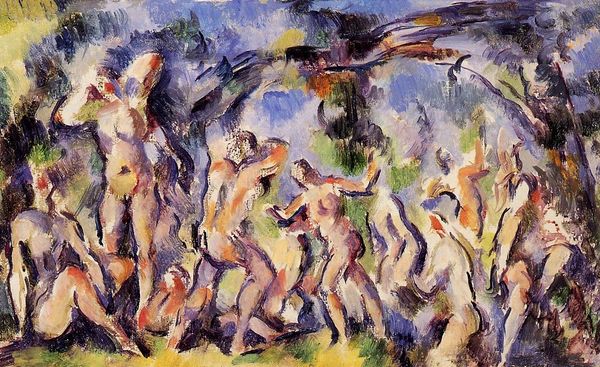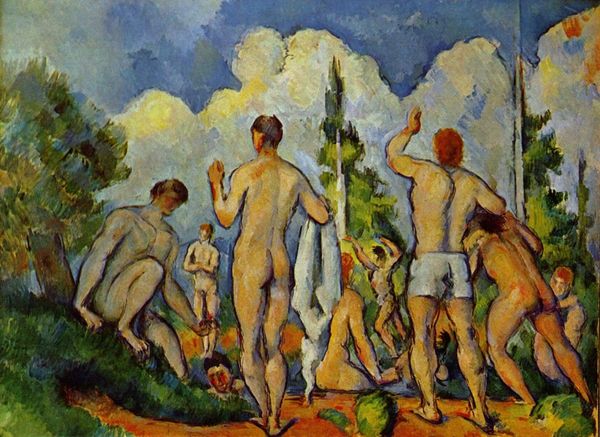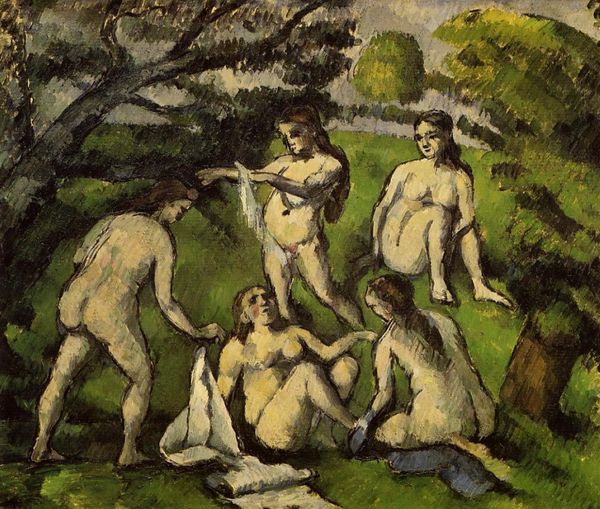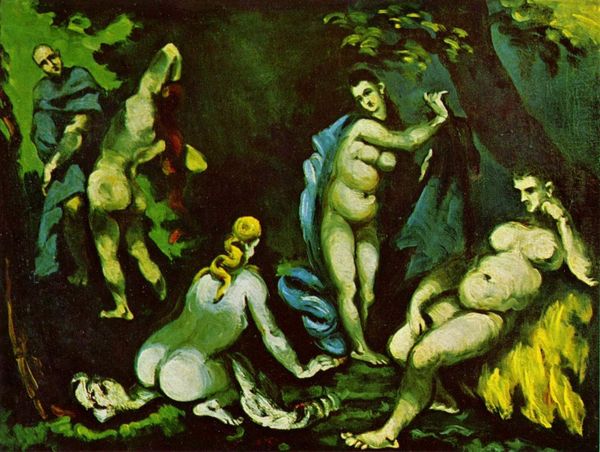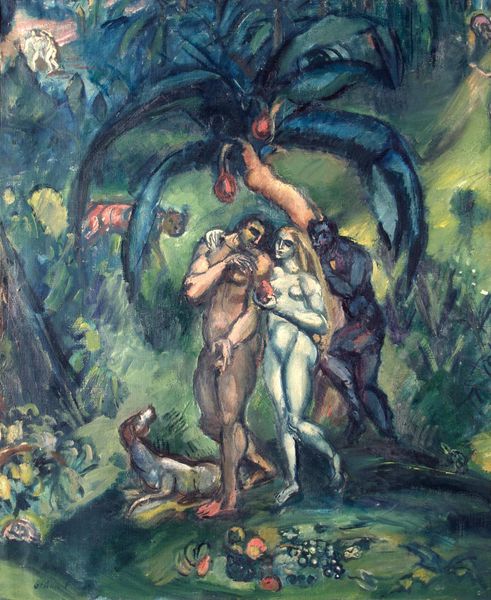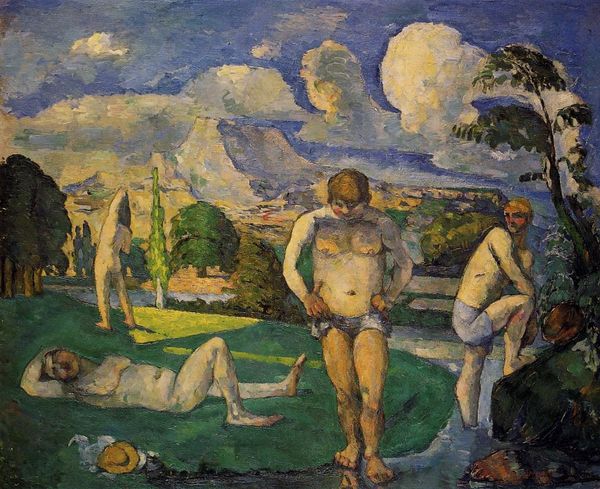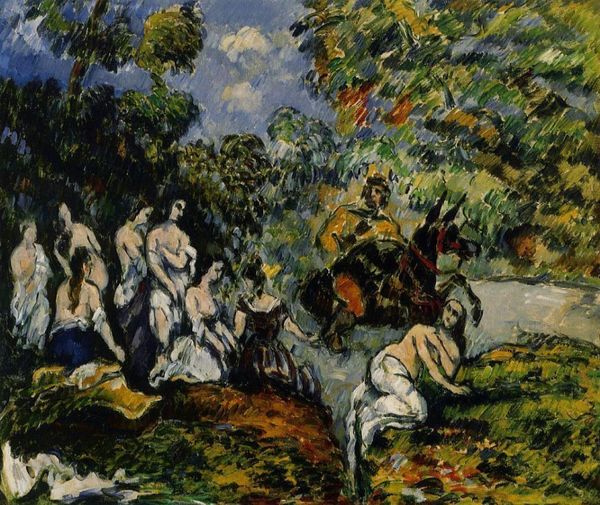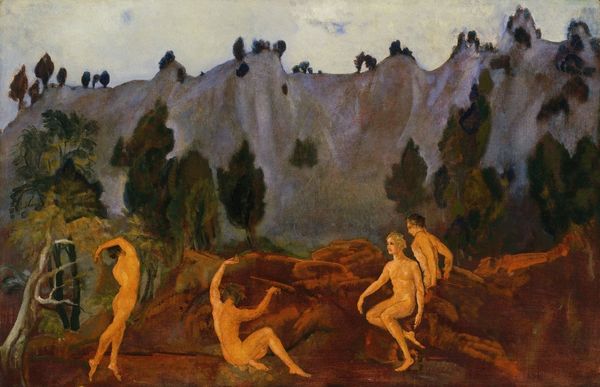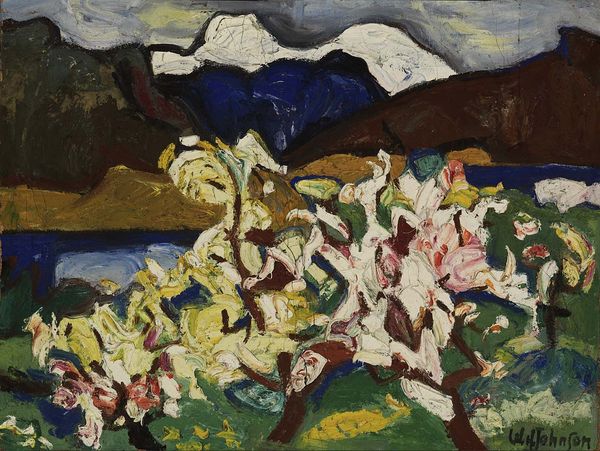
painting, oil-paint
#
tree
#
painting
#
impressionism
#
oil-paint
#
landscape
#
impressionist landscape
#
figuration
#
oil painting
#
mythology
#
history-painting
#
post-impressionism
#
nude
Copyright: Public domain
Curator: Standing before us is "The Battle of Love," an 1880 oil painting by Paul Cézanne, currently held in a private collection. It presents a scene filled with figures, many nude, set within a loosely defined landscape. Editor: Immediately, I’m struck by the raw, almost visceral texture of the paint. The colors are applied in thick strokes, building form through a sense of materiality more than precise representation. There's a primal energy in the way these figures interact. Curator: Absolutely. And I think we must contextualize this energy. Consider the rise of modernity at the time –the anxieties around industrialization, changing social structures. How might these struggles be embodied, or projected onto, ideas of love, intimacy and violence? It seems Cezanne engages a rich history of conflict in representation. Editor: I’m also considering Cezanne’s method here, the materiality of paint itself enacting a certain type of…struggle, if you will. Notice the brushstrokes – they're almost sculptural, adding volume and presence to the forms. You can practically see him building the composition layer by layer. And how does this bear on the role of the nude, then, within an ever-expanding marketplace for images? Curator: Good question! Are these classical nudes re-imagined through the lens of a rapidly changing world? Is Cezanne subverting the traditions of history painting and mythology? The title "The Battle of Love" hints at the complexity of desire, possession, power dynamics, even the internal struggles we all grapple with regarding love. These themes become explicit precisely by deconstructing that tradition. Editor: Exactly. He's deconstructing the grand narratives of art history and also showcasing his process, pushing the very definition of what a painting *is.* Curator: So the art lies not in presenting a definitive statement but in inviting dialogue about those fundamental, yet conflicting, aspects of the human condition. Editor: And by engaging us, physically almost, through his treatment of the paint. These nudes aren't ethereal visions; they're built from tangible stuff. Laboriously wrought. We might even ask about Cezanne's own relationship to labor, and how class difference might have influenced such images. Curator: Thank you, this piece prompts us to reflect not just on love but the act of creation itself, a negotiation between material and concept, between history and present. Editor: Indeed, it challenges our expectations of beauty, urging us to confront the messy, physical reality beneath the surface of our desires.
Comments
No comments
Be the first to comment and join the conversation on the ultimate creative platform.
